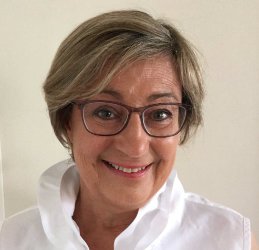Children in practice: Insights from PSE therapy
An article by Dr Birgitt Holschuh-Lorang
Treating children in practice presents unique challenges. Their physical and psychological complaints often differ from those of adults, and their responses to therapeutic measures can vary significantly. In this article, we share our experiences with PSE therapy in treating children, highlighting common problem areas and distinctive aspects of this approach.
Children often experience a wide range of physical and psychological challenges that can significantly impact their daily lives and development. Common physical complaints include a weakened immune system with recurrent infections, bronchial asthma, and allergic conditions such as hay fever. Other frequently encountered issues are childhood migraines, chronic abdominal pain of unknown origin, and enuresis (bedwetting).
On the psychological side, concentration difficulties, behavioral issues such as tics or stuttering, ADHD, school-related anxiety, and other anxiety disorders are often observed. Additionally, sleep disturbances, sleepwalking, and developmental disorders like reading and spelling difficulties frequently accompany these concerns.

Particularities for children
The causal value in children is often remarkably high, typically ranging between 70% and 90%. This reflects their strong sense of intuition and heightened creativity.
The main difference compared to adults is the typically shorter duration of therapy needed to resolve a conflict, particularly in younger children. However, it is still crucial to perform a follow-up test after approximately 8 weeks to evaluate the therapy's progress.
When geopathic stress is identified in children, simply changing the bed's position is usually sufficient to alleviate the stress in those under the age of 12. Their robust regulatory systems can typically compensate for any potential vegetative withdrawal symptoms following the adjustment. As a result, additional aids, such as Geovita, are generally not needed.
Experiences with PSE therapy in children
Studies indicate an impressive success rate of 95% for PSE treatment in children. To enhance the effectiveness of the therapy, it is also recommended to provide complementary treatment for the mother and, if possible, the father.
Other experiences:
- PSE therapy is highly well-tolerated by children. The PSE complex remedies are generally accepted with ease, and refusals to take them are rare.
- Globules are a suitable alternative, particularly when mothers express concerns about the alcohol content in the remedies.
- Young patients often demonstrate surprisingly good compliance, and in many cases, resolving just one or two conflicts is sufficient to achieve significant improvement or even complete resolution of symptoms.
- However, it is important to acknowledge that, in some cases, longer treatment durations may also be required for children.
If PSE treatment alone is not sufficient, as is sometimes the case with children suffering from chronic immune deficiencies, allergies, or bronchial asthma, the organ test kit can provide valuable support. Positive tests often involve organ ampoules such as ‘Colon,’ ‘NNH,’ or ‘Tonsille.’ In these situations, additional remedies have proven effective. These include products designed to support the intestinal microbiome, as well as other options tailored to the diverse experiences of each therapist working with PSE. These complementary remedies can be seamlessly combined with the PSE remedies.
Concluding thought
The primary goal of PSE therapy for children is to enhance their self-esteem, foster happiness, identity, and a sense of security, and cultivate a positive outlook on life. These psychological benefits directly influence the regulation and effectiveness of the immune system, contributing to a lasting improvement in children's overall quality of life.


